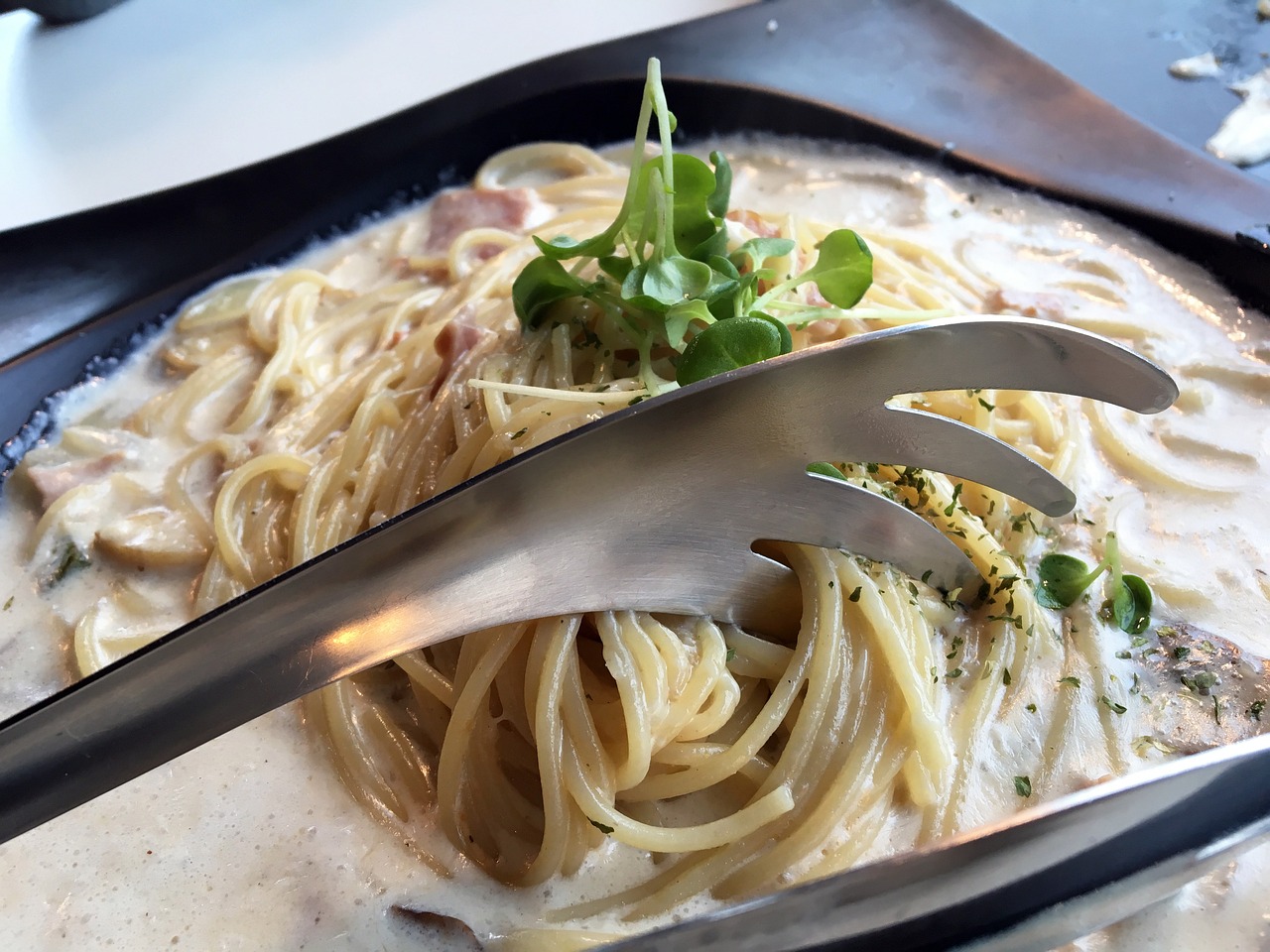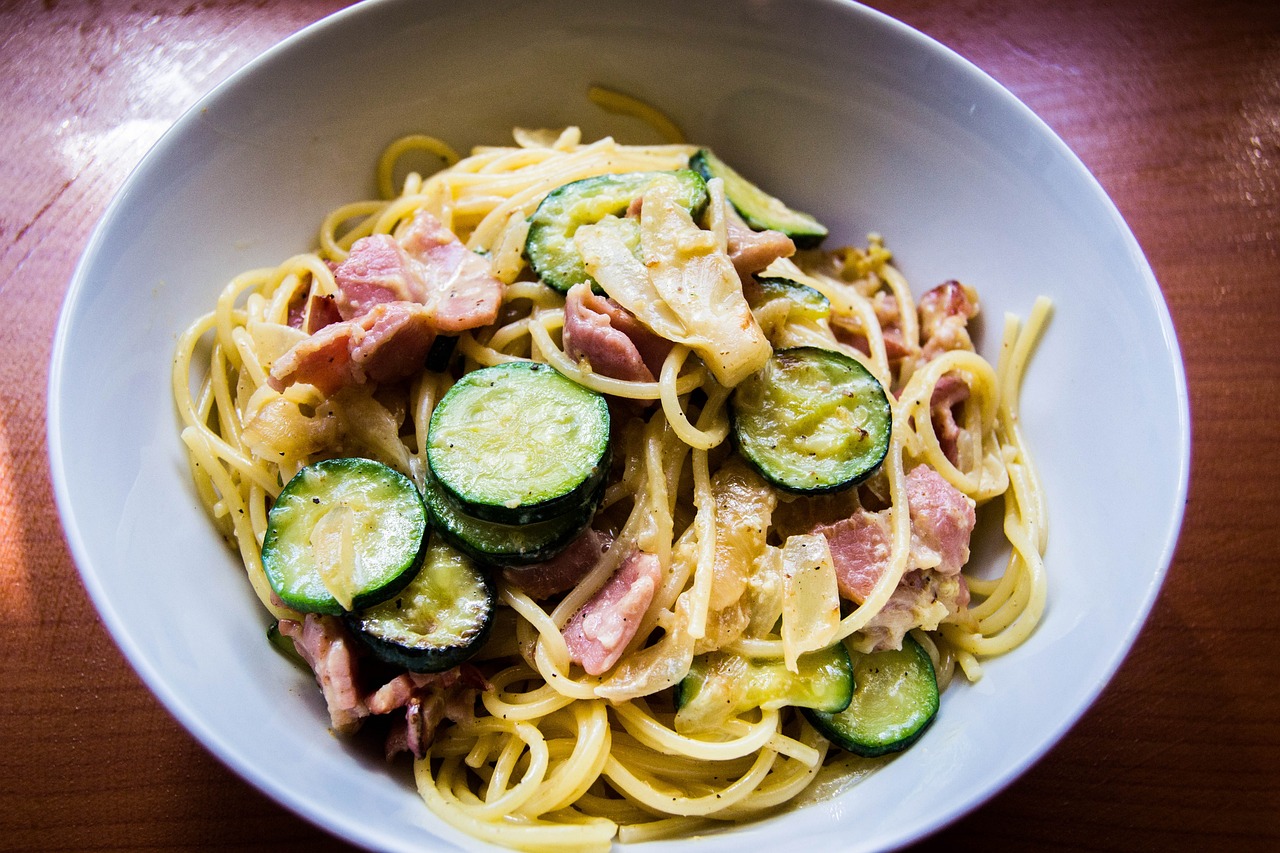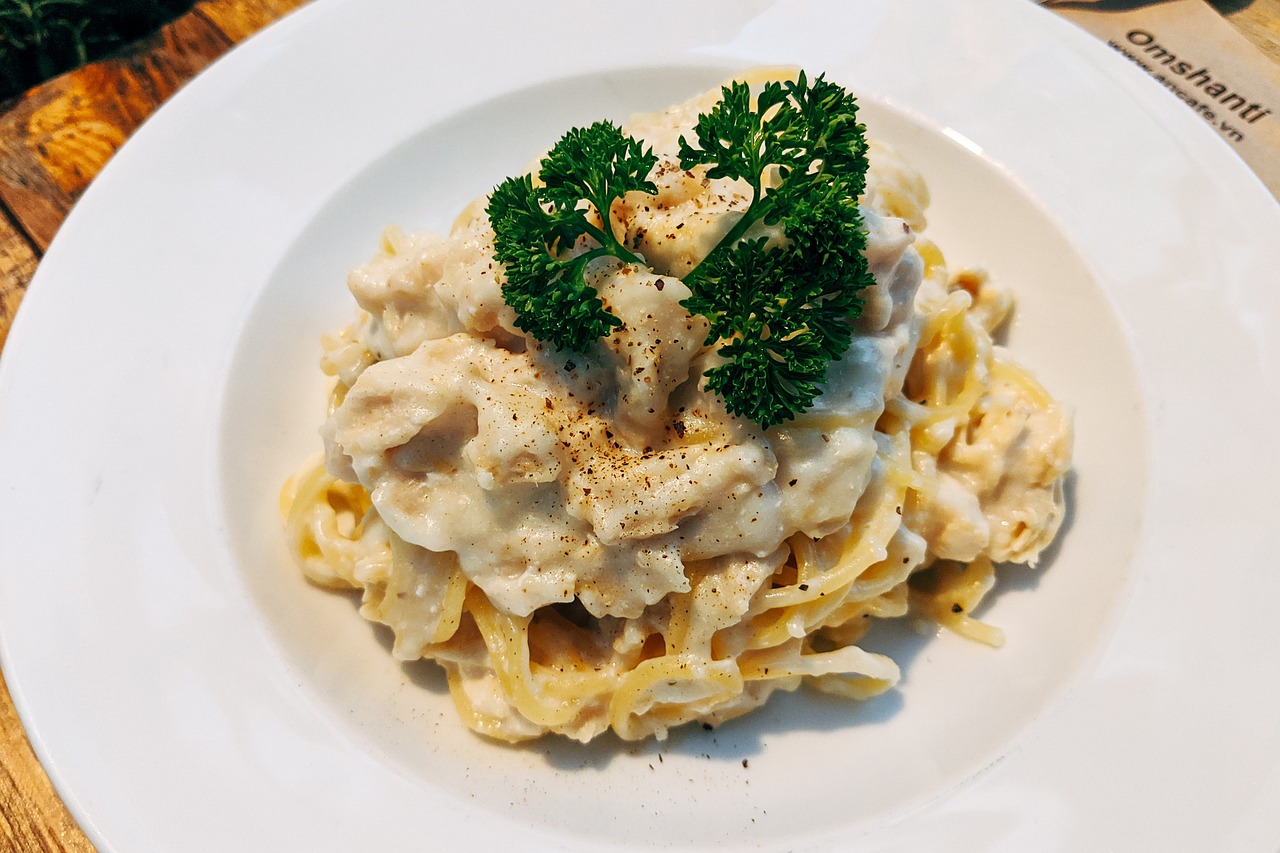Classic Spaghetti Carbonara: A Taste of Italy

When it comes to classic Italian cuisine, few dishes can rival the timeless appeal of Spaghetti Carbonara. This iconic pasta dish is a true taste of Italy, offering a perfect blend of simplicity and flavor that has captivated taste buds around the world. Picture a dish that combines the richness of eggs, the saltiness of cheese, the savory goodness of pancetta, and the subtle kick of black pepper, all coming together in a creamy sauce that coats each strand of perfectly cooked spaghetti.
But what is the story behind this beloved dish? How did it come to be a staple on Italian menus and a favorite among pasta lovers everywhere? Let's dive into the history of Spaghetti Carbonara and uncover the secrets that make it so special.
Originating in the bustling streets of Rome, Spaghetti Carbonara has a history as rich and flavorful as the dish itself. Originally a simple meal enjoyed by Italian charcoal workers, it has evolved over the years to become a symbol of Italian culinary tradition. Today, it is a dish that embodies the essence of Italian cooking – uncomplicated yet deeply satisfying.
When it comes to preparing the perfect Spaghetti Carbonara, the key lies in the quality of the ingredients and the technique used. From choosing the right type of pasta to selecting the freshest eggs and the finest cheese, every element plays a crucial role in creating a dish that is both creamy and indulgent. The secret is in the balance of flavors and textures, ensuring that each bite is a harmonious blend of richness and simplicity.
While the traditional recipe for Spaghetti Carbonara remains a favorite among purists, there are countless variations and regional adaptations that offer a unique twist on this classic dish. From adding vegetables to experimenting with different types of cheese, the possibilities are endless. Whether you prefer a traditional Roman-style Carbonara or a modern interpretation with a creative flair, there is a version of this dish to suit every palate.
When it comes to serving Spaghetti Carbonara, presentation is key. A sprinkle of freshly grated cheese, a twist of black pepper, and a garnish of fresh herbs can elevate the dish from simple to spectacular. Pairing it with the right wine can further enhance the dining experience, with options ranging from crisp whites to full-bodied reds that complement the creamy sauce and savory flavors of the dish.
History of Spaghetti Carbonara
The history of Spaghetti Carbonara is as rich and flavorful as the dish itself. Legend has it that this beloved Italian pasta dish originated in Rome, where it was created as a hearty meal for Italian charcoal workers. The name "carbonara" is derived from the Italian word "carbone," which means coal, reflecting its humble beginnings among the working class.
While the exact origins of spaghetti carbonara are shrouded in mystery, many believe that it was inspired by the American dish "cacio e uova," which consisted of pasta, cheese, and eggs. Over time, Italian chefs put their own spin on the recipe, adding pancetta or guanciale, a cured pork jowl, to create the iconic dish we know today.
As spaghetti carbonara gained popularity in Rome and beyond, it evolved into a staple of Italian cuisine, cherished for its simplicity and bold flavors. Today, it is enjoyed by pasta lovers around the world, with each region putting its own unique twist on the classic recipe.
Key Ingredients and Preparation
When it comes to crafting the perfect Spaghetti Carbonara, the key lies in selecting the finest ingredients and mastering the precise preparation techniques. Let's delve into the essential components that make this dish a culinary masterpiece.
First and foremost, the type of pasta used in Spaghetti Carbonara plays a crucial role in achieving the ideal texture and taste. Opt for high-quality spaghetti noodles that can hold the rich sauce and provide a satisfying bite with each forkful.
Next, the star ingredients of this classic dish are **eggs** and **cheese**. Fresh, organic eggs are essential for creating a velvety sauce that coats the pasta perfectly. When it comes to cheese, **Pecorino Romano** or **Parmigiano-Reggiano** are traditionally used to impart a salty and nutty flavor profile.
To begin the preparation, start by cooking the **pancetta** or **guanciale**, a type of Italian cured pork, until it turns crispy and releases its flavorful oils. This step infuses the dish with a rich, savory essence that forms the base of the sauce.
Once the pasta is cooked al dente, it's time to combine the eggs and cheese to create the creamy sauce. **Whisk** together the eggs and grated cheese until smooth, then slowly incorporate the hot pasta into the mixture, allowing the residual heat to cook the eggs and melt the cheese, resulting in a luscious coating.
For an extra touch of decadence, a generous amount of freshly ground **black pepper** is sprinkled over the dish before serving. The pepper not only adds a subtle heat but also enhances the overall flavor profile of the Spaghetti Carbonara.
In terms of technique, it's crucial to work swiftly and efficiently when combining the ingredients to prevent the eggs from scrambling. The key is to toss the pasta and sauce together quickly to achieve a silky, creamy consistency that clings to each strand of spaghetti.
Variations and Regional Adaptations
When it comes to spaghetti carbonara, there is no shortage of variations and regional adaptations that have emerged over the years. Each region of Italy, and even different parts of the world, have put their own unique twist on this classic dish, resulting in a diverse array of interpretations that cater to different tastes and preferences.
One of the most common variations of spaghetti carbonara involves the choice of meat used in the dish. While the traditional recipe calls for pancetta, some regions opt for guanciale, a type of cured pork jowl, which adds a slightly different flavor profile to the dish. Additionally, in certain areas, bacon or even smoked meats are used as a substitute, offering a smokier and more intense taste.
Another aspect that varies across regions is the type of cheese used in the sauce. While Pecorino Romano and Parmigiano-Reggiano are the classic choices, some adaptations incorporate other types of cheese such as Grana Padano or even a mix of different cheeses to enhance the richness and depth of flavor in the sauce.
Regional adaptations also extend to the addition of extra ingredients to the basic carbonara recipe. In some areas, mushrooms, peas, or even cream are included to create a more decadent and filling version of the dish. These additions provide a unique twist on the traditional spaghetti carbonara, appealing to those who enjoy a more complex flavor profile.
Furthermore, the cooking technique and presentation of spaghetti carbonara can vary significantly from region to region. While some areas prefer a more saucy and creamy texture, others aim for a drier consistency with distinct strands of pasta coated in the sauce. The way the dish is served, garnished, and plated also differs, showcasing the creativity and individuality of each culinary tradition.
Overall, the variations and regional adaptations of spaghetti carbonara highlight the versatility and adaptability of this beloved Italian dish. Whether you prefer the classic Roman recipe or are eager to explore innovative twists on the traditional flavors, there is a version of spaghetti carbonara to suit every palate and culinary preference.
Serving Suggestions and Wine Pairings
When it comes to serving spaghetti carbonara, presentation is key to enhancing the dining experience. A beautifully plated dish not only looks appetizing but also sets the stage for a memorable meal. Consider serving the pasta in individual bowls or on a large platter for a family-style dining experience.
To elevate the flavors of spaghetti carbonara, consider adding some freshly chopped parsley or cracked black pepper on top for a pop of color and an extra burst of flavor. These simple garnishes not only enhance the visual appeal of the dish but also add a layer of freshness to the rich and creamy sauce.
When it comes to wine pairings, choosing the right bottle can take your spaghetti carbonara experience to the next level. Opt for a medium-bodied white wine such as a Chardonnay or a Pinot Grigio to complement the creamy texture of the sauce and the savory notes of the pancetta.
For those who prefer red wine, a light-bodied red like a Pinot Noir can also be a great choice, offering a nice contrast to the richness of the dish. The key is to find a wine that balances the flavors of the pasta without overpowering them, creating a harmonious pairing that enhances the overall dining experience.



 HazalVardal
HazalVardal 





